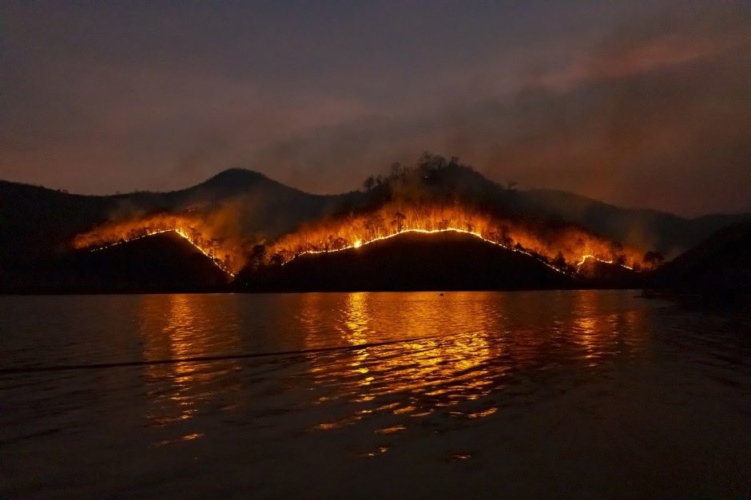The model, which is claimed to accurately capture wildfire behaviour at forest scale, was created by researchers at KAUST in Saudi Arabia and their international collaborators.
“Our work can help to make real forest fires more predictable by simulating potential fire scenarios with real forestry data,” said Torsten Hädrich, a Ph.D. student in Dominik Michels’ group at KAUST. “We are also able to simulate how firebreaks in forests can be used to contain fire spread.”
UAV-IoT networks could help fight wildfires
Wildfire warriors: the latest developments in aerial firefighting technology
According to KAUST, climate change simulations have long predicted a global rise in the prevalence and intensity of wildfires. “We titled our research paper ‘Fire in Paradise’ in reference to the northern Californian town of Paradise that was devastated by a wildfire in November 2018, resulting in more than 80 fatalities,” said research leader Michels, an Assistant Professor of Computer Science in the Computer, Electrical and Mathematical Science and Engineering Division at KAUST.
“The main challenge is to capture the complex dynamics involved,” Hädrich said in a statement. The simulation must include a model for tree combustion and a fluid dynamics component for the simulation of fire while accounting for environmental variations, such as tree density, terrain and wind.
Previous forest-scale fire simulations ae said to have represented trees as cones or cylinders, but this simplification of forest structure reduces the accuracy of the simulation. Hädrich, Michels and their collaborators developed a method to model trees as collections of branch-like modules. “Our module-based representation provides a way to control the level of detail for the simulation,” Hädrich said.

Depending on the scenario being simulated, each tree can be represented either by many detailed modules to generate highly realistic branching structures or by fewer coarser modules for efficient computation. “Our approach is capable of realistically simulating the propagation of fire through entire ecosystems with varying forest cover,” Hädrich said.
Further improvements of the predictive accuracy of the simulation include modelling the cloud formation and rainfall that can result as water vapor is released from burning vegetation.
“We would like to include the simulation of sparks flying through the air and address fire spread on the ground facilitated by grass, branch litter and undergrowth vegetation,” Michels said. “We also plan to further validate our approach using satellite images of real wildfires.”




April 1886: the Brunkebergs tunnel
First ever example of a ground source heat pump?